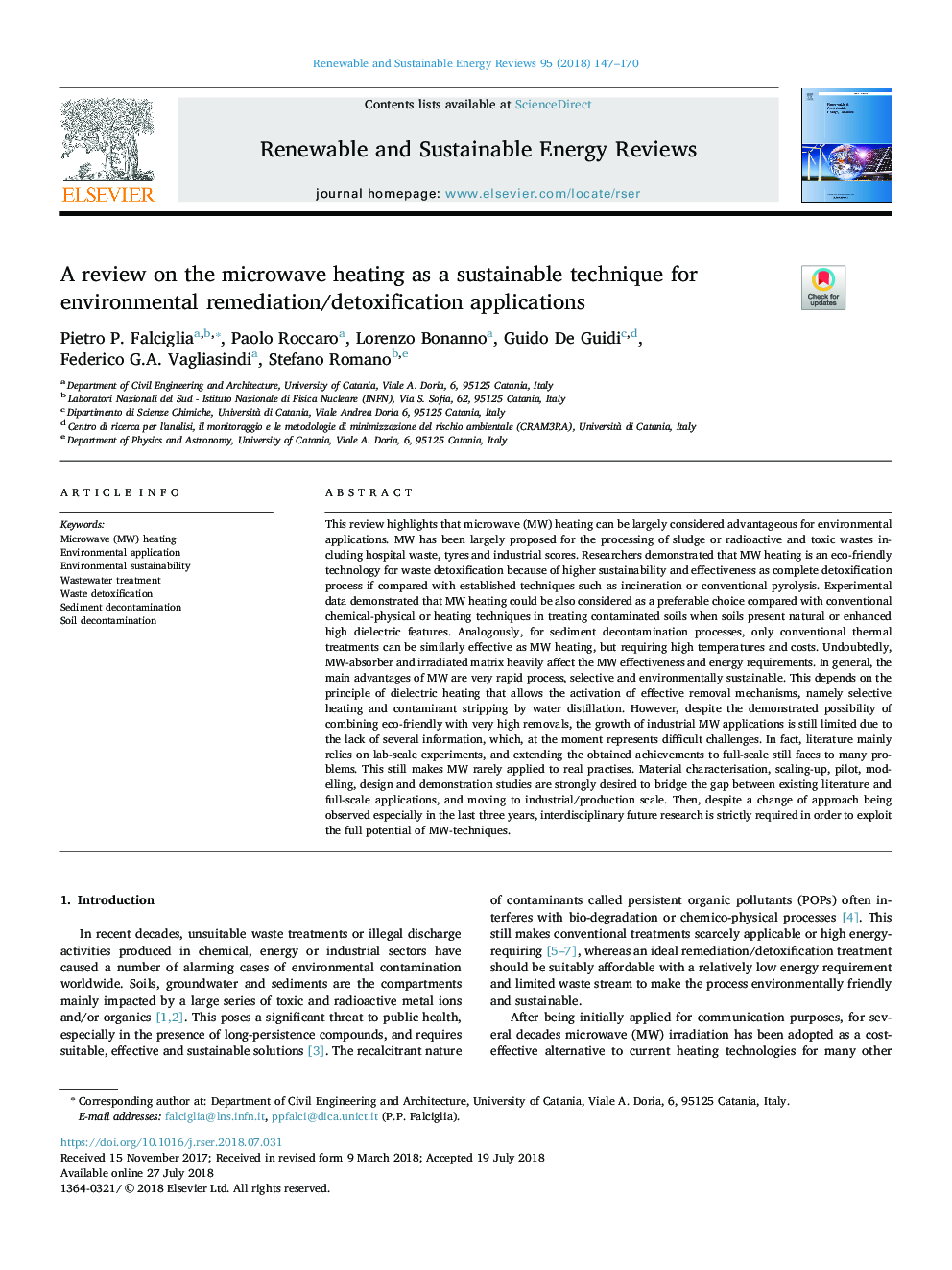| Article ID | Journal | Published Year | Pages | File Type |
|---|---|---|---|---|
| 8110284 | Renewable and Sustainable Energy Reviews | 2018 | 24 Pages |
Abstract
This review highlights that microwave (MW) heating can be largely considered advantageous for environmental applications. MW has been largely proposed for the processing of sludge or radioactive and toxic wastes including hospital waste, tyres and industrial scores. Researchers demonstrated that MW heating is an eco-friendly technology for waste detoxification because of higher sustainability and effectiveness as complete detoxification process if compared with established techniques such as incineration or conventional pyrolysis. Experimental data demonstrated that MW heating could be also considered as a preferable choice compared with conventional chemical-physical or heating techniques in treating contaminated soils when soils present natural or enhanced high dielectric features. Analogously, for sediment decontamination processes, only conventional thermal treatments can be similarly effective as MW heating, but requiring high temperatures and costs. Undoubtedly, MW-absorber and irradiated matrix heavily affect the MW effectiveness and energy requirements. In general, the main advantages of MW are very rapid process, selective and environmentally sustainable. This depends on the principle of dielectric heating that allows the activation of effective removal mechanisms, namely selective heating and contaminant stripping by water distillation. However, despite the demonstrated possibility of combining eco-friendly with very high removals, the growth of industrial MW applications is still limited due to the lack of several information, which, at the moment represents difficult challenges. In fact, literature mainly relies on lab-scale experiments, and extending the obtained achievements to full-scale still faces to many problems. This still makes MW rarely applied to real practises. Material characterisation, scaling-up, pilot, modelling, design and demonstration studies are strongly desired to bridge the gap between existing literature and full-scale applications, and moving to industrial/production scale. Then, despite a change of approach being observed especially in the last three years, interdisciplinary future research is strictly required in order to exploit the full potential of MW-techniques.
Keywords
Related Topics
Physical Sciences and Engineering
Energy
Renewable Energy, Sustainability and the Environment
Authors
Pietro P. Falciglia, Paolo Roccaro, Lorenzo Bonanno, Guido De Guidi, Federico G.A. Vagliasindi, Stefano Romano,
